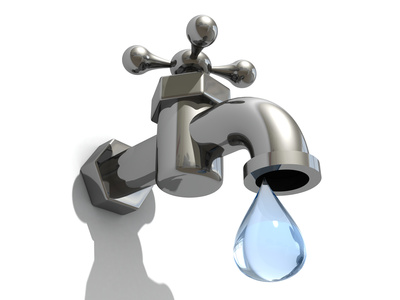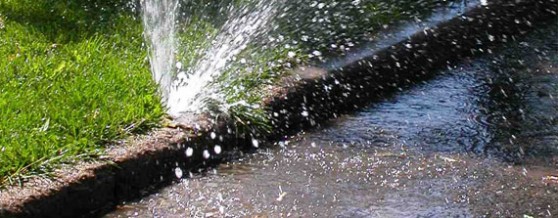The Facts on Leaks:
• The average household’s leaks can account for more than 10,000 gallons of water wasted every year, or the amount of water needed to wash 270 loads of laundry.
• Household leaks can waste more than 1 trillion gallons annually nationwide. That’s equal to the annual household water use of more than 11 million homes.
• Ten percent of homes have leaks that waste 90 gallons or more per day.
• Common types of leaks found in the home include worn toilet flappers, dripping faucets, and leaking showerheads. All are easily correctable.
• Fixing easily corrected household water leaks can save homeowners about 10 percent on their water bills.
• Keep your home leak-free by repairing dripping faucets, toilet flappers, and showerheads. In most cases, fixture replacement parts don’t require a major investment.
• Most common leaks can be eliminated after retrofitting a household with new WaterSense labeled fixtures and other high-efficiency appliances.
Leak Detection:
• A good method to check for leaks is to examine your winter water use. It’s likely that a family of
four has a serious leak problem if its winter water use exceeds 12,000 gallons per month.
• Check your water meter before and after a two-hour period when no water is being used. If the meter does not read exactly the same, you probably have a leak.
• One way to find out if you have a toilet leak is to place a drop of food coloring in the toilet tank. If the color shows up in the bowl within 15 minutes without flushing, you have a leak. Make sure to flush immediately after this experiment to avoid staining the tank.
Faucets and Showerheads:
• A leaky faucet that drips at the rate of one drip per second can waste more than 3,000 gallons per year. That’s the amount of water needed to take more than 180 showers!
• Leaky faucets can be fixed by checking faucet washers and gaskets for wear and replacing them if necessary. If you are replacing a faucet, look for the WaterSense label.
Fix a Leak Fact Sheet
• A shower head leaking at 10 drips per minute wastes more than 500 gallons per year. That’s the amount of water it takes to wash 60 loads of dishes in your dishwasher.
• Most leaky shower heads can be fixed by ensuring a tight connection using pipe tape and a wrench. If you are replacing a shower head, look for one that has earned the WaterSense label.
Toilets:
• If your toilet is leaking, the cause is often an old or faulty toilet flapper. Over time, this inexpensive rubber part decays, or minerals build up on it. It’s usually best to replace the whole rubber flapper—a relatively easy, inexpensive do-it-yourself project that pays for itself in no time. To test to see if the flapper is bad put some food coloring in the tank and check the bowl in about 5 minutes to see if color shows up.
• If you do need to replace the entire toilet, look for the WaterSense label. If the average family replaces its older, inefficient toilets with new WaterSense labeled ones, it could save 13,000 gallons of water per year. Retrofitting the house could save the family nearly $2,400 in water and wastewater bills over the lifetime of the toilets.
Outdoors:
• An irrigation system should be checked each spring before use to make sure it was not damaged by frost or freezing.
• An irrigation system that has a leak 1/32nd of an inch in diameter (about the thickness of a dime) can waste about 6,300 gallons of water per month.
• To ensure that your in-ground irrigation system is not leaking water, consult with a WaterSense irrigation partner who has passed a certification program focused on water efficiency; visit www.epa.gov/watersense/meet_
• Check your garden hose for leaks at its connection to the spigot. If it leaks while you run your hose, replace the nylon or rubber hose washer and ensure a tight connection to the spigot using pipe tape and a wrench.
Article courtesy of :







